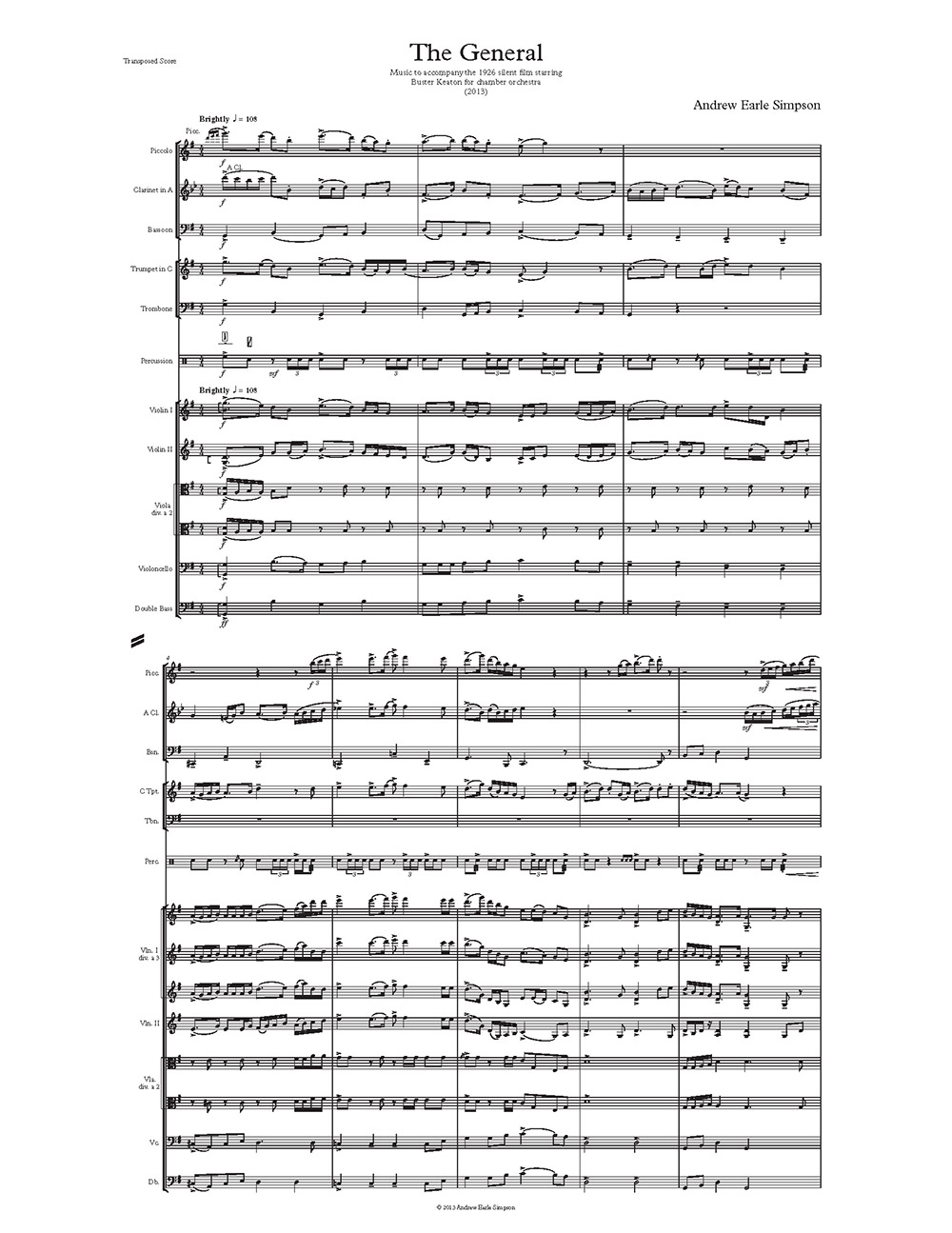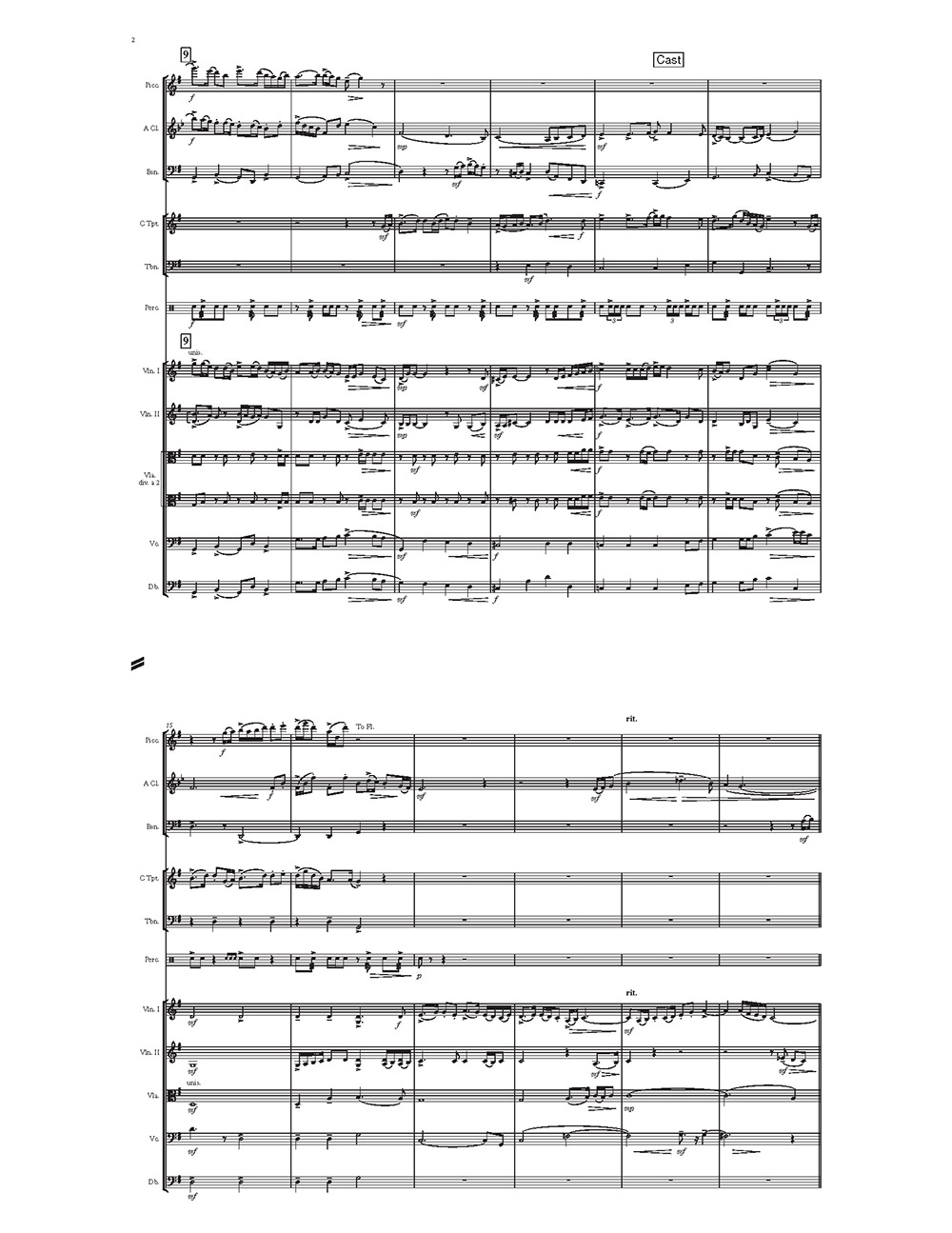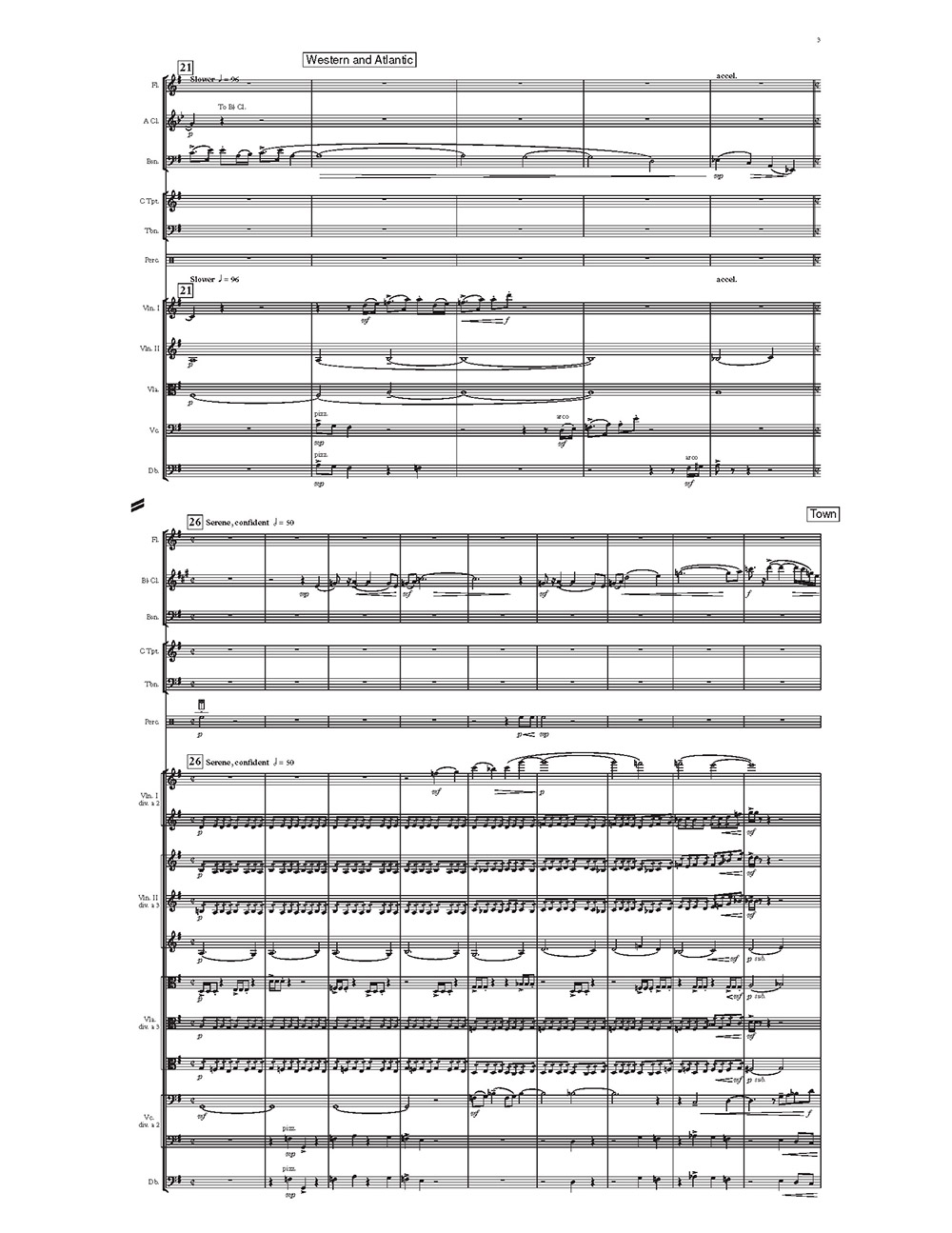The General (2014)
Music to accompany the 1926 silent film starring Buster Keaton, 78 minutes
Instrumentation
1(dbl pc) 01 (dbl bs cl) 1 0110 1 perc vn I vn I va vc cb
Premiere
12 January 2014, National Gallery of Art Orchestra, Washington, DC.
Andrew Simpson, guest conductor
Watch + Listen
Live performance of THE GENERAL, members of The Florida Orchestra, David Stech, conductor, Tampa Theatre, FL
Main Title
Annabelle Shuns Buster
Final Battle
Program Notes
Since its birth in the late 1800s, film has almost always been accompanied by music, but the ways in which this is accomplished have varied. In the silent era, for example, most films never received specifically created scores. Rather, the choice of music tended to be left to the artistic staff on hand in each local theatre. Early on, film studios developed musical aids called “cue sheets,” essentially thumbnail guides that suggested potentially appropriate music to accompany each scene, or “cue,” in a film. Music publishers worked hand-in-hand with the studios by producing volumes of sheet music that contained numerous examples of music suitable for a wide variety of situations: chases, love scenes, moments of danger, and the like. Performers would then use cue sheets and compilation volumes to pull together enough tunes to fill the time. In a few cases, however, particularly for especially lavish productions, so-called “special scores” were assembled to accompany one particular film. These “special scores” were most often compilations of existing repertoire by established classical masters, with perhaps a few moments of new additional music linking the borrowed passages together. Still another type of film accompaniment was pure musical improvisation: sometimes a performer would have seen a film before playing for it, but more often he or she would be working with it at first sight.
My score for THE GENERAL, however, is different. It is a fully written-out, newly composed, original orchestral score, designed with the intent of tracking the action and emotion of the film as closely as possible, from beginning to end. Ultimately, the goal of both of these types of accompaniment is to support the image on the screen. The ideal, to my mind, is to create music that will be partner to the film, neither dominating it nor being dominated by it, but rather amplifying the film’s natural abilities to express emotion and to tell a story. The finished product should provide a seamless aesthetic experience, more powerful in the combination of art forms than either could be on its own.
With improvisation as live accompaniment, there is flexibility. The artist can respond in the moment to a surge of emotion, a laugh from the audience, or even a broken film reel. There is, in theory, infinite space for any and all variation, and infinite possibility for change. With a fully notated score such as my new one for THE GENERAL, however, there is almost no margin for error: the conductor must remain synchronized with the film, and synchronize the orchestra with it, as well. Human beings speed up and slow down, and variation in tempo is a natural part of musical performance; however, film runs at a single, constant pace, and the challenge—and the thrill!--is to perform with expression while still tracking the screen.
THE GENERAL is perhaps Buster Keaton's best-known film. Set during the American Civil War, Keaton portrays Johnnie Gray, a southern railroad engineer who rejection by the Confederate army is mistakenly seen as cowardice by his belle Annabelle Lee. Later, Keaton's locomotive (named "GENERAL") is stolen by Union spies, and Keaton gives chase to retrieve his stolen engine. Keaton manages, somehow, to seamlessly combine heroic action and bumbling ineptitude, often within the same scene: this co-existence of two worlds (the great war and the private clown) set the tone for my score, which responds and supports both. Inventive and clever throughout, with a warm, affirming finish, THE GENERAL is one of the most beloved films of the silent era.
—Andrew Earle Simpson


